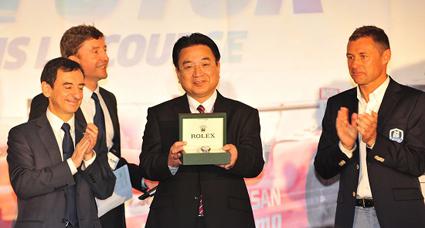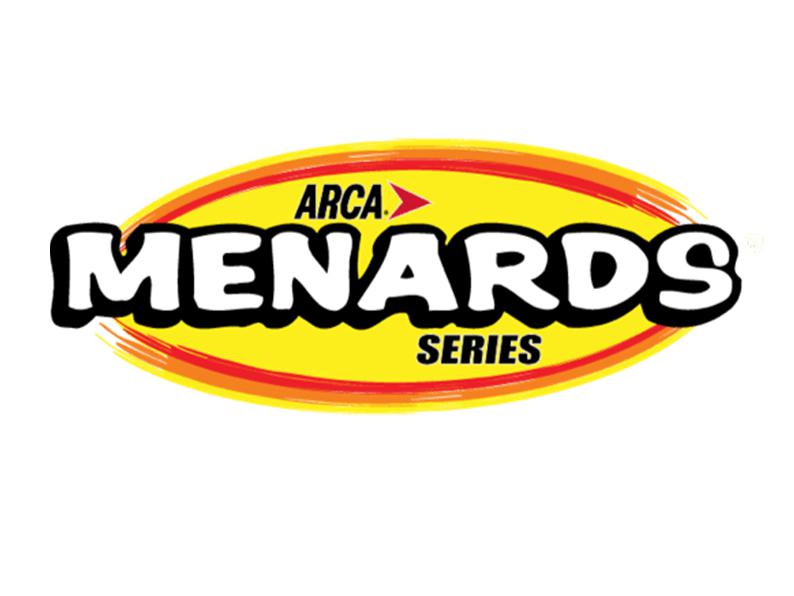The ACO Announces Two New Regulations
Image

Today, the Automobile Club de l’Ouest held its annual press conference in the 24-Hours museum before the 83rd Le Mans 24 Hours on June 13-14. It took advantage of the occasion to announce two new sets of regulations for the GTE and LM P2 categories.
Pierre Fillon, the Automobile Club de l’Ouest president, made a point of reminding everybody of the main safety regulations applied at the circuit with the new division of the zones of the layout and the various revamps carried out. It was also announced that during the 2015-2016 winter four new pits will be built so that the circuit can accommodate 60 cars in 2017 in the Le Mans 24 Hours.
With the aim of helping entrants and improving performance two sets of new technical regulations were announced.
The first to come into force will be the one governing the Le Mans Grand Touring (LM GTE) category on January 1, 2016. The aim of these regulations brought in by the ACO and the FIA is to make the category a more sporting and attractive proposition through its technology and regulations, which will lead to a better performance differentiation between the LM GTE and the GT3 categories. This new philosophy will make GTE more attractive to new manufacturers from a cost point of view.
The second set of regulations concern the future of the Le Mans Prototype 2 category (LM P2). The ACO, IMSA and the FIA are working flat out on the introduction of these new regulations that will come into force in 2017. Their aim is to ensure the long-term success of this category thanks to the reduction of costs, a guarantee of stability in the regulations and the wish to orient the performances in LM P2 towards those currently prevailing in LM P1.
After the presentation of the regulations, the allocation of the 56th garage in 2017 was announced. It has been given to Welter Racing with its BW Biogaz Le Mans 2017. The ACO considers this car to be a technically innovative one as it is powered by methane extracted from waste recycling.
The Le Mans 24 Hours is the pinnacle of the FIA World Endurance Championship, and during this press conference it gave pride of place to the Americans by recalling the strong links between Le Mans and the United States. Lesa France Kennedy, CEO of the International Speedway Corporation and NASCAR Vice president, went up onto the podium to talk about the project for the enlargement and improved welcome of the public at the Daytona International Speedway, which runs the Rolex 24 Hours of Daytona every year, the opening round of the North American Championship.
To close the press conference President Fillon presented the 15th Spirit of Le Mans to Yoshiaki Kinoshita. This trophy is awarded every year by the Automobile Club to a person who has best served the Spirit of Le Mans. Toyota, the Japanese company that has been the pioneer in terms of engine hybrids, made its Le Mans comeback in 2012. Kinoshita was the president of the Toyota Racing team that entered two TS030 Hybrids for the race. In 2014, he just missed out on victory at Le Mans, but went to win the drivers’ and manufacturers’ titles in the FIA World Endurance Championship.
Pierre Fillon, the Automobile Club de l’Ouest president, made a point of reminding everybody of the main safety regulations applied at the circuit with the new division of the zones of the layout and the various revamps carried out. It was also announced that during the 2015-2016 winter four new pits will be built so that the circuit can accommodate 60 cars in 2017 in the Le Mans 24 Hours.
With the aim of helping entrants and improving performance two sets of new technical regulations were announced.
The first to come into force will be the one governing the Le Mans Grand Touring (LM GTE) category on January 1, 2016. The aim of these regulations brought in by the ACO and the FIA is to make the category a more sporting and attractive proposition through its technology and regulations, which will lead to a better performance differentiation between the LM GTE and the GT3 categories. This new philosophy will make GTE more attractive to new manufacturers from a cost point of view.
The second set of regulations concern the future of the Le Mans Prototype 2 category (LM P2). The ACO, IMSA and the FIA are working flat out on the introduction of these new regulations that will come into force in 2017. Their aim is to ensure the long-term success of this category thanks to the reduction of costs, a guarantee of stability in the regulations and the wish to orient the performances in LM P2 towards those currently prevailing in LM P1.
After the presentation of the regulations, the allocation of the 56th garage in 2017 was announced. It has been given to Welter Racing with its BW Biogaz Le Mans 2017. The ACO considers this car to be a technically innovative one as it is powered by methane extracted from waste recycling.
The Le Mans 24 Hours is the pinnacle of the FIA World Endurance Championship, and during this press conference it gave pride of place to the Americans by recalling the strong links between Le Mans and the United States. Lesa France Kennedy, CEO of the International Speedway Corporation and NASCAR Vice president, went up onto the podium to talk about the project for the enlargement and improved welcome of the public at the Daytona International Speedway, which runs the Rolex 24 Hours of Daytona every year, the opening round of the North American Championship.
To close the press conference President Fillon presented the 15th Spirit of Le Mans to Yoshiaki Kinoshita. This trophy is awarded every year by the Automobile Club to a person who has best served the Spirit of Le Mans. Toyota, the Japanese company that has been the pioneer in terms of engine hybrids, made its Le Mans comeback in 2012. Kinoshita was the president of the Toyota Racing team that entered two TS030 Hybrids for the race. In 2014, he just missed out on victory at Le Mans, but went to win the drivers’ and manufacturers’ titles in the FIA World Endurance Championship.
 MEMBERSHIP LOGIN
MEMBERSHIP LOGIN JOIN PRI
JOIN PRI


